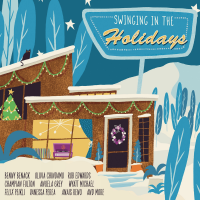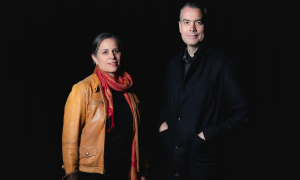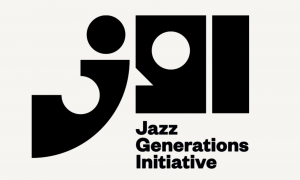The 1973 album was Ross' fourth studio recording removed from the Supremes and her most mature studio package up until that point. Today we think of Ross as a first-name star performer--like Barbra or Cher. But in the early 1970s, Ross' solo bid was fragile at best and could go either way. As the liner notes to this new CD set point out, Ross would open most of her live dates at the time by saying, “Good evening ladies and gentlemen, and welcome to the 'let's-see-if-Diana-Ross-can-do-it-by-herself show.' “
Questions about Ross' ability to click with audiences certainly were merited. But her slow start hardly was her fault. Little strategic thinking had been done to forge an image for her, as is evidenced by the unevenness of her initial Motown LPs. Clearly, the label assumed that stardom would kick in for Ross eventually and that Motown's resources were better trained on other acts.
But when Ross (Lady Sings the Blues) lost out to Liza Minnelli (Cabaret) at the 1972 Academy Awards, Motown founder Berry Gordy had had enough. Rather than continue to let Ross twist artistically in the wind, Gordy wisely crafted an image for her as a relaxed contemporary legend--not a struggling wannabe or square jazz heir. Ross' projects underway were immediately shelved, including Blue (more jazz), To the Baby (too middle-age), Diana and Marvin (too second fiddle) and Live at Caesars Palace (too premature).
Instead, it was bullet time. To achieve a solid standing on her own, Ross needed a crossover hit album that resonated with blacks and whites, with women and men. Women needed to see Ross as a strong fighter with passionate needs while men had to perceive her as sexy and desirable. And whatever image was created, it had to stick with her for years and not have to be re-made with the next release. The result was Touch Me in the Morning, an album with five top producers headed by Gordy. The title track reached No. 1 on the Billboard Hot 100 Singles Chart and the LP hit No. 5 on the Billboard Albums Chart.
The album's approach was similar in some ways to the sound pioneered with great success by Karen and Richard Carpenter on A Song For You (1972), also their fourth release. There was a soft urgency to their delivery, a layered choral approach that hit the mark on Hurting Each Other, Goodbye to Love and I Won't Last a Day Without You. The difference is that Ross' delivery packed more heat on the soulful side compared with Karen Carpenter's tightly wound, ice-cool perfection.
The opening track, Touch Me in the Morning, was written by Michael Masser [pictured] and Ron Miller and instantly established Ross as a strong-sexy woman. Side 1 built steadily from there, with All of My Life, We Need You and Leave a Little Room, closing with the Carpenters' hit I Won't Last a Day Without You written by Roger Nichols and Paul Williams. Side 2 included a mix of originals and covers. There was Little Girl Blue for lingering fans of Lady Sings the Blues from the shelved Blue album and John Lennon's Imagine. There also were three tracks plucked from the To the Baby project.
For years, To the Baby remained a phantom album. Recorded while Ross was pregnant, the project was meant to be a collection of songs for her young children. Said Ross in a 1975 interview paraphrased in Andrew Skurow's liner notes: “When I'm away, I'd like them to be able to put on a tape or record so they can listen to me, or hear me say something positive to them while I'm away, and they'll know that it's okay that I have to do what I have to do."
Fortunately, To the Baby has finally made it out of the vault and onto the second CD in this set. It's a gorgeous, gentle collection of tender songs recorded with enormous love and passion. Included are The First Time Ever I Saw Your Face, Got to Be There and Marvin Gaye's Save the Children.
As this new set demonstrates, Ross in 1973 was a beautiful singer of medium-tempo soul-pop ballads. She added warmth and passion to the pop female-vocal genre at a time when male groups dominated the charts and robust singers like Carly Simon and Helen Reddy owned the brassy space and Roberta Flack dominated on the bedroom ballad.
For me, it's a joy to hear this album again after so many years, particularly Touch Me in the Morning, I Won't Last a Day Without You and Michael Randall's organic Leave a Little Room. It's what radio music sounded like at the tail end of the soul era, before dance music from Philadelphia, Detroit and South Florida changed everything. Ross needs to be revisited by vocal fans and taken more seriously.
JazzWax tracks: Diana Ross' Touch Me in the Morning (Expanded Edition) from Hip-O Select is a two-CD set that's available only here. I don't know whether there are plans to add the album to iTunes and other on-line retailers. Rather than play like a collection of singles, there is a concept feel to the album and a What's Going On symmetry that brings all of the tracks together. For those who like to mix albums in iTunes, Touch Me in the Morning works well shuffled with Dusty Springfield's Dusty in Memphis (1969). Both have a morning coffee feel.
JazzWax clip: Here's Diana Ross singing Touch Me in the Morning from a TV special in 1999...
This story appears courtesy of JazzWax by Marc Myers.
Copyright © 2025. All rights reserved.
































